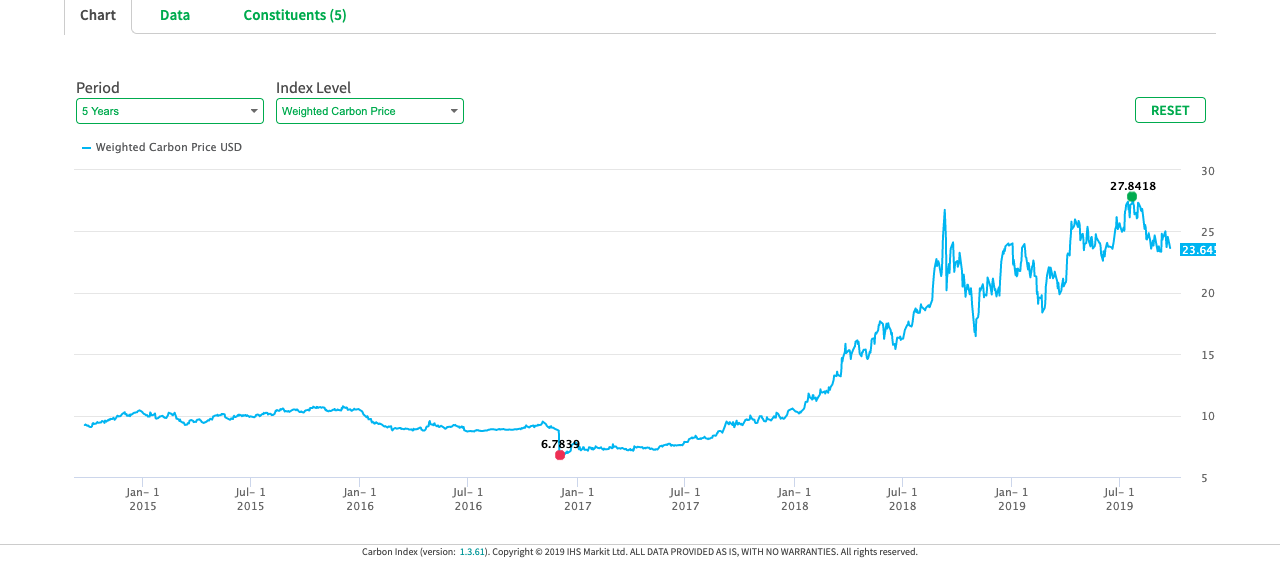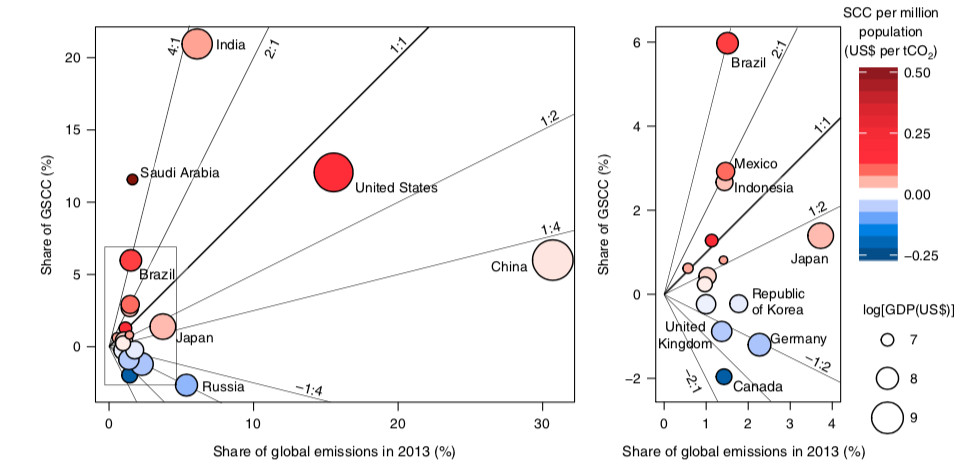Introduction
The current challenge of climate change is attributable to different factors, including global warming, pollution, and deforestation. The sustainability of the planet might become unfeasible if different stakeholders fail to collaborate and apply evidence-based measures. The adoption of various economic models is a superior strategy that appears promising and capable of guiding policymakers and nations to tackle the predicament of climate change. This paper begins by giving a detailed analysis of global warming as a major challenge the entire world is facing today. It goes further to present the social cost framework as one of the widely utilized tools and the best recommendations for maximizing the targeted sustainability index.
Environmental Issue Background
Human activities have transformed the world through the introduction of new production and consumption processes. The present levels of industrialization and globalization have put additional pressure on the natural environment due to the increasing rate of overutilization of natural resources. These economic developments have created numerous challenges that people need to take seriously than ever before. The identified issue for this analysis is that of global warming since it contributes directly to the predicament of climate change. This problem arises from ozone layer depletion and the subsequent creation of the greenhouse effect. From the late 19th century, companies and industries began to release various chemicals and gases known as chlorofluorocarbons (CFCs) due to the emerging processes for energy production. The high percentages of water vapor, methane, carbon dioxide, and CFCs have resulted in the greenhouse effect (Kotchen, 2017). Consequently, the destruction of the ozone layer and the increased heat from the sun ensure that no gases can escape from the earth’s atmosphere.
The cyclic nature of this trend has resulted in a steady rise in global temperatures. The emerging phenomenon is known as global warming and it has triggered the destruction of various ecosystems and the re-emergence of virulent microorganisms that have the potential to disorient human life (Kotchen, 2017). According to Kormann (2019), the temperature of this planet has increased by 0.95 Celsius degrees in comparison with the average for the entire 20th century. Human activities deliver around 11 percent of the total volume of greenhouses in the world’s atmosphere (Bradford & Pappas, 2017). In his study, Irfan (2018) observed that the problem of climate change was affecting over 800 million global citizens in different parts of the world. These victims encounter numerous challenges, including heat waves, extreme weather patterns or events, severe droughts, cold seasons, and rising sea levels (Nwankwoala, 2015). The consideration of evidence-based approaches is, therefore, needed to deal with this environmental predicament.
Economic Model: Applicability
The problem of global warming is compelling for different thinkers and stakeholders to consider superior models to protect the integrity of the planet. One of the best frameworks for mitigating or guiding professionals to overcome this issue is that of social cost. Pezzey (2018) identifies it as the representation of the financial resources stakeholders save by avoiding anticipated damage. The principle aspect of this tool is that it seeks to consider the nature and effectiveness of policies intended to minimize the volume of different greenhouse gases in the atmosphere, such as methane and carbon dioxide (Kotchen, 2017). When these sources of pollution receive a price or value tag, chances are high that different professionals will make appropriate or timely evaluations to justify additional measures and mitigate the problem of climate change.
In terms of applicability, this economic model integrates the assigned financial costs or the emitted gases and compares them with the initiatives implemented to mitigate them. Users can rely on the framework to analyze scenarios that have the potential to maximize emissions, such as population growth, industrial activities, and economic functions (Nordhaus, 2017). The next stage is to introduce approximations founded on possible damages to such gases and precise possible temperature changes, economic system disturbances, and cyclone frequencies. The users will apply the acquired data to produce possible future damages and assign present financial values.
The consideration of such a model has made it possible for the different countries to implement new laws dictating how companies and manufacturers pursue their goals. For instance, the framework has forced governments to introduce new guidelines for vehicle emissions standards. The financial values derived from the model have become powerful tools for guiding economic functions, agricultural activities, and sustainability practices (Pyhälä et al., 2016). These attributes and developments explain why such a model remains applicable in a wide range of settings and countries today.
Effectiveness of the Economic Model
The above analysis has identified the social cost model as a tool that is capable of guiding scholars and analysts to understand and address the problem of global warming. However, Jones (2019) indicates that such a framework might not give a true picture of the implications of this environmental issue on the economic development of different countries. For instance, different regions lack the relevant pricing strategies for gauging the unique challenges of carbon emissions. The example of china stands out since the government has failed to design an effective scheme to ensure that it trades effectively with other nations across the globe (Jones, 2019). The model is also not standardized since some nations will tend to charge higher carbon prices than others, such as Sweden whose value for a ton of carbon is 125 US dollars (Jones, 2019). These disparities in emissions might be a result of the ineffectiveness of the social cost model and how it can become a uniform tool for all nations.
The use of the emerging statistics and interpretations has failed to change the situation since the global society is experiencing numerous challenges than ever before. Jones (2019) argues that different stakeholders can’t make accurate predictions of the damages increased carbon emissions might have on the natural environment. Some experts have proposed the need to increase the price for carbon to minimize the existing differences and support the introduction of superior or stricter laws (see Figure 1). Unless these measures are put into consideration, chances are high that the use of the social cost model to approximate costs for carbon and the predicted damages will become counterproductive
.

Some analysts have gone further to present new views regarding the applicability of the identified model. For example, Irfan (2018) believes that the social cost framework does not consider how different plants and economic activities might be pursued in specific conditions or temperatures. It also ignores the damages associated with productivity, labor, buildings, and construction of infrastructure (Kormann, 2019). These human aspects have the potential to result in increased emissions and even affect the integrity of the global environment. The use of this model indicates that some countries omit more gases than others (see Figure 2). Unfortunately, very little has been done to punish government that might be doing injustice to their counterparts.

Another unique gap or weakness that might make the described tool ineffective for addressing the identified problem is that it assumes that people’s value for existing ecosystems and surrounding environments will remain unchanged. However, the model ignores the fact that scarce materials tend becoming unavailable and more valuable. Finally, the fact that it assigns a constant discount indicates that it cannot predict the future harms or challenges recorded in different regions across the globe using monetary value (Franzen, 2015). Consequently, it becomes necessary for stakeholders to consider the achievements the global society has recorded due to the adoption of the social cost economic model and focus on a superior framework that has the potential to address the outlined weaknesses.
Conclusion
The above discussion has singled out global warming as a leading environmental issue that all countries need to address using various economic tools. The social cost model remains practical and capable of guiding more people and countries to appreciate the intensity of this challenge. However, it appears to present various drawbacks and injustices that require an improved version or new strategies to make this planet more sustainable. The described gaps need to encourage policymakers and thinkers to consider a better model that can transform the current situation and make it easier for different stakeholders to overcome most of the problems associated with global warming and the subsequent problem of climate change.
References
Bradford, A., & Pappas, S. (2017). Effects of global warming. Live Science.
Franzen, J. (2015). Carbon capture. The New Yorker.
Irfan, U. (2018). Climate change is a global injustice. A new study shows why. Vox.
Jones, C. (2019). What is the true cost of carbon emissions? Financial Times.
Kormann, C. (2019). The false choice between economic growth and combating climate change. The New Yorker.
Kotchen, M. J. (2017). Which social cost of carbon? A theoretical perspective. Journal of the Association of Environmental and Resource Economists, 5(3), 673-694.
Nordhaus, W. D. (2017). Revisiting the social cost of carbon. PNAS, 114(7), 1518-1523.
Nwankwoala, H. N. L. (2015). Causes of climate and environmental changes: The need for environmental-friendly education policy in Nigeria. Journal of Education and Practice, 6(30), 224-234.
Pezzey, J. C. V. (2018). Why the social cost of carbon will always be disputed. WIREs Climate Change, 10(1).
Pyhälä, A., Fernández-Llamazares, Á., HLehvävirta, H., Byg, A., Ruiz-Mallén, I., Salpeteur, M., & Thornton, T. F. (2016). Global environmental change: Local perceptions, understandings, and explanations. Ecology and Society, 21(3), 25-53.